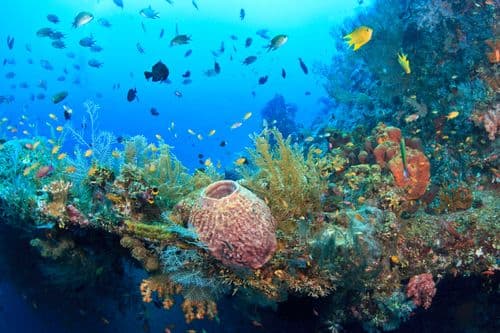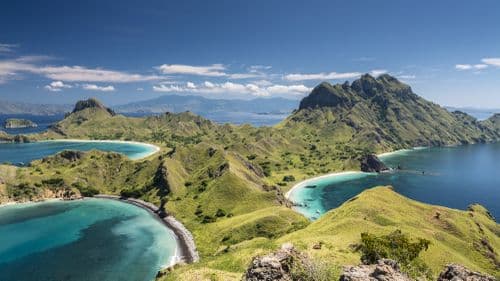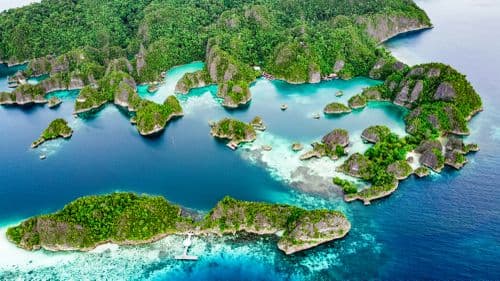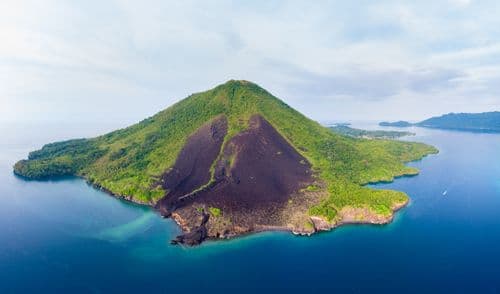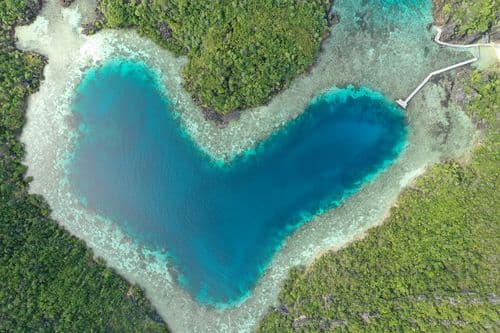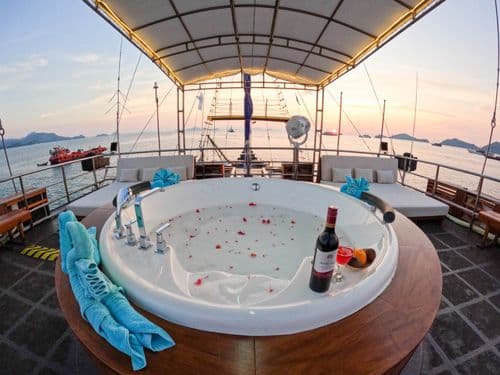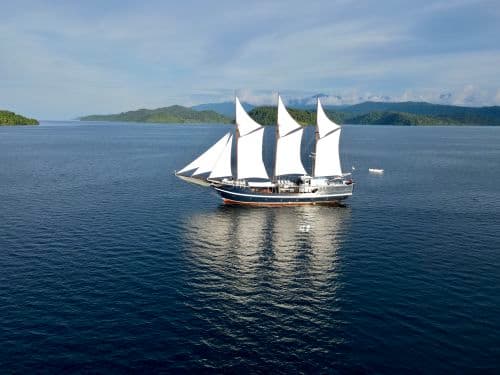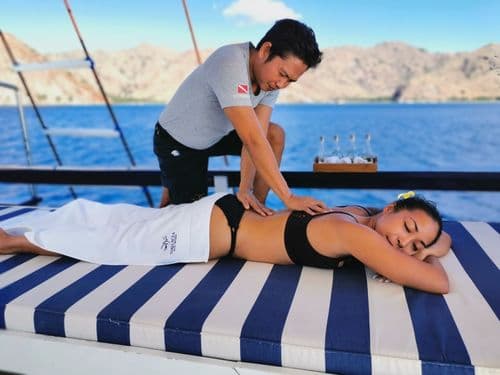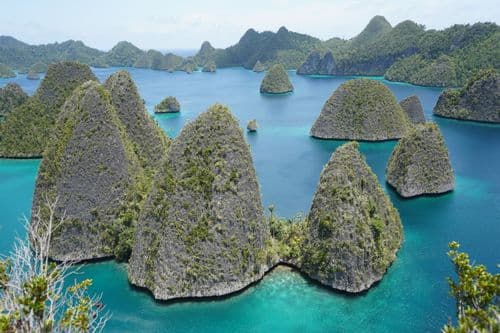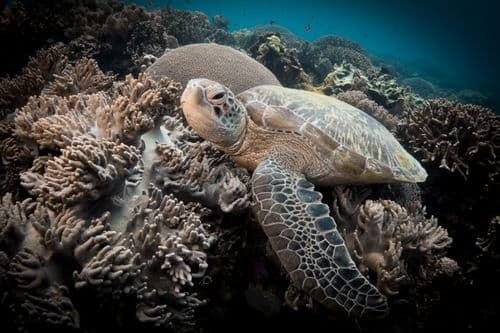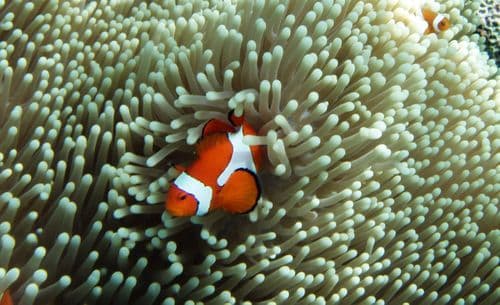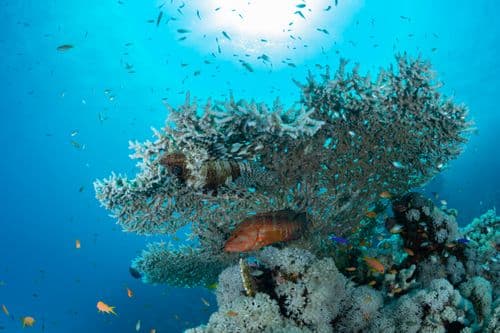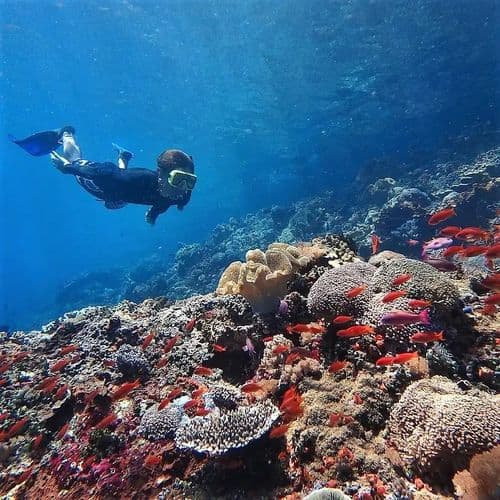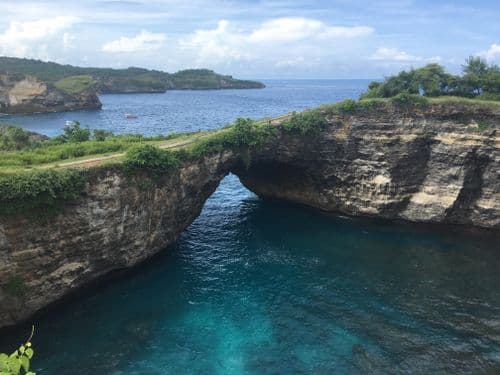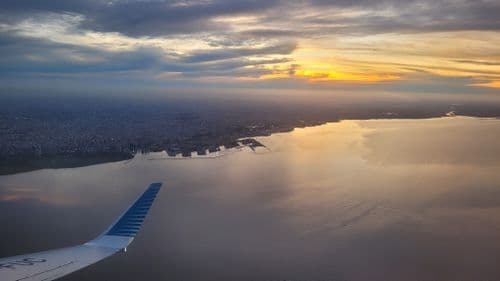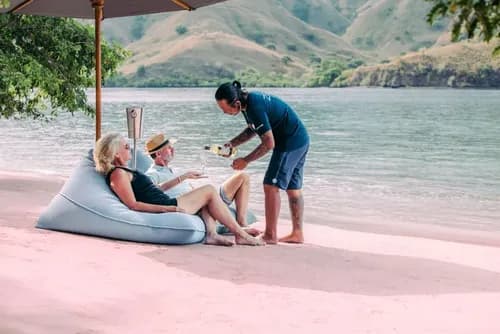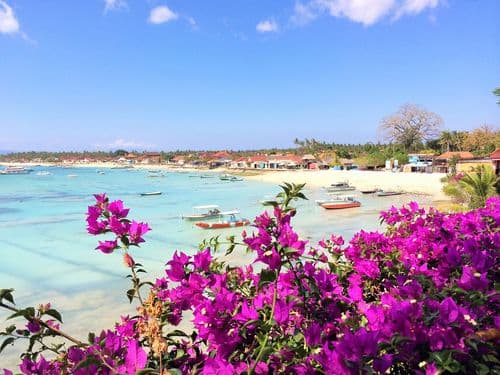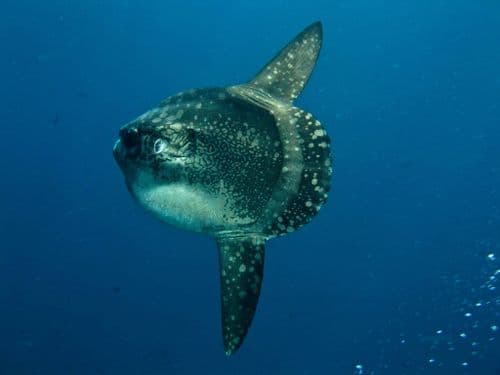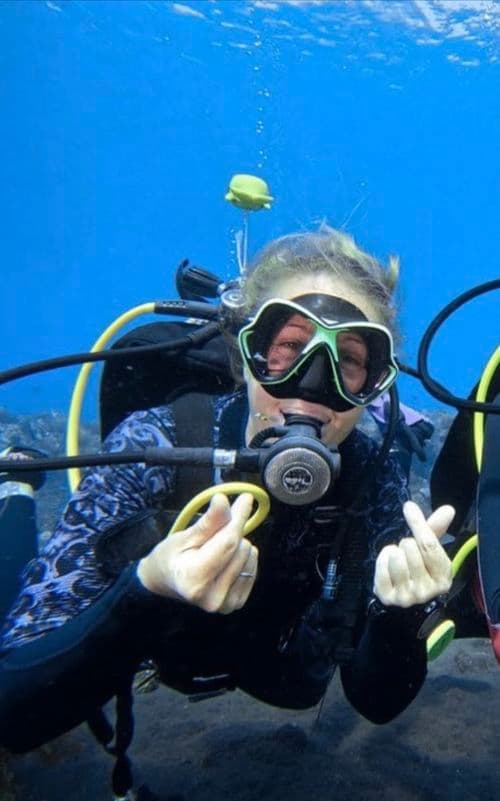
Frequently Asked Questions (FAQ)
Answers to the most common questions we get about Indonesia Diving Cruises
Question search
Categories
Travel Booking
How much is my down payment, what's the cancellation policy?
Please see our complete Terms and Conditions where you will find our detailed payment and cancellation policies.
What are the top liveaboard companies in Indonesia?
A top liveaboard company in Indonesia offers a combination of excellent service, knowledgeable guides, well-maintained vessels, and unique itineraries. Customer feedback and reviews are crucial indicators of a company's reliability and quality. Here are some factors that set the best liveaboard companies apart:
- Expert Dive Guides: Experienced and knowledgeable dive guides who prioritize safety and provide insightful information about dive sites.
- Comfortable Accommodation: Well-maintained cabins with modern amenities to ensure a comfortable stay.
- Delicious Cuisine: High-quality food catering to various dietary needs, with fresh ingredients and a variety of options.
- Sustainable Practices: Commitment to eco-friendly and sustainable diving practices, including reef-safe policies and participation in conservation efforts.
- Customer Service: Exceptional customer service from booking to the end of the trip, ensuring a seamless and enjoyable experience.
Which are the best liveaboard companies operating in Indonesia?
- Aqua Expeditions: Known for their luxurious Aqua Blu vessel, Aqua Expeditions offers high-end liveaboard experiences with exceptional service and amenities. Their itineraries cover some of the most stunning areas in Indonesia, including Raja Ampat and the Spice Islands. Customer feedback highlights the opulent cabins, gourmet cuisine, and personalized service.
- Mermaid Liveaboards: Mermaid I and Mermaid II are renowned for their excellent dive guides, comfortable accommodations, and diverse itineraries. They offer trips to Komodo, Raja Ampat, and the Banda Sea. Reviews often mention the professional crew, delicious food, and well-organized dive schedules.
- Sea Safari Cruises: Operating vessels like the Sea Safari VI and Sea Safari VII, Sea Safari Cruises offers a range of itineraries throughout Indonesia, including Raja Ampat and Komodo. Guests appreciate the spacious cabins, friendly crew, and exceptional diving experiences.
What do customers say about these top liveaboard companies?
- Aqua Expeditions: Customers rave about the luxurious experience aboard Aqua Blu. The attention to detail, personalized service, and stunning dive locations make it a favorite among discerning divers.
- Mermaid Liveaboards: Reviews consistently mention the professional and friendly crew, excellent food, and well-thought-out itineraries. Divers appreciate the balance between adventure and comfort.
- Sea Safari Cruises: Guests often highlight the spacious and comfortable cabins, the quality of the diving, and the professionalism of the crew. The diverse itineraries and focus on guest satisfaction make it a popular choice.
How do these companies ensure a safe and enjoyable diving experience?
- Experienced Dive Guides: All the top liveaboard companies employ highly experienced and certified dive guides who prioritize safety and provide detailed briefings before each dive.
- Well-Maintained Equipment: The companies ensure that all diving equipment is regularly serviced and maintained to the highest standards.
- Safety Protocols: Comprehensive safety protocols, including emergency procedures and first aid, are in place to handle any potential issues that may arise during the trip.
- Customer Support: Excellent customer support from booking through to the end of the trip ensures that any issues are promptly addressed, providing a stress-free experience for divers.
Why choose a liveaboard for diving in Indonesia?
Indonesia's vast and diverse marine environments are best explored via liveaboards, which allow divers to reach remote and less-visited dive sites. A liveaboard offers the convenience of diving multiple times a day without the need for daily travel, maximizing time spent underwater. Additionally, the camaraderie and shared experiences with fellow divers on board enhance the overall adventure.
For expert recommendations on the best liveaboard experience tailored to your preferences, contact us today!
Health & Safety
Are there any health and safety tips for diving in Indonesia?
Diving in Indonesia is generally safe, but like any dive destination, there are potential health risks to be aware of. These include:
- Decompression Sickness (DCS): Also known as "the bends," DCS occurs when nitrogen bubbles form in the bloodstream due to rapid ascent. To avoid DCS, always follow safe ascent rates and make safety stops.
- Marine Stings and Bites: Indonesia's rich marine life includes some potentially hazardous creatures, such as jellyfish, stonefish, and sea urchins. Wearing a wetsuit and being mindful of where you place your hands and feet can reduce the risk of stings and bites.
- Sunburn and Dehydration: The tropical sun can be intense, leading to sunburn and dehydration. Protect yourself by using high-SPF sunscreen, wearing protective clothing, and drinking plenty of water.
How can I prevent decompression sickness while diving in Indonesia?
Preventing decompression sickness involves adhering to safe diving practices:
- Plan Your Dive: Use dive tables or a dive computer to monitor your depth and bottom time. Plan your dives conservatively, especially if you’re diving multiple times a day.
- Ascend Slowly: Follow a safe ascent rate of no more than 18 meters (60 feet) per minute. Always make a safety stop at 5 meters (15 feet) for 3-5 minutes.
- Stay Hydrated: Dehydration can increase the risk of DCS. Drink plenty of fluids before and after dives, but avoid alcohol and caffeine, which can dehydrate you.
- Avoid Flights After Diving: Wait at least 18-24 hours after your last dive before flying to reduce the risk of DCS.
What should I do if I encounter hazardous marine life?
Encounters with hazardous marine life are rare, but it’s important to know how to react:
- Stay Calm: Most marine creatures are not aggressive and will not attack unless provoked. Maintain a safe distance and avoid touching marine life.
- Use Protective Gear: Wearing a full wetsuit, gloves, and booties can provide protection against stings and cuts.
- Know First Aid: Learn basic first aid for marine stings and bites. Rinse stings with vinegar, remove tentacles with tweezers, and immerse the affected area in hot water to relieve pain.
What are some general health tips for divers in Indonesia?
- Get a Pre-Dive Medical Check: Ensure you’re fit to dive by getting a medical check-up before your trip. Inform your dive operator of any medical conditions.
- Stay Fit: Good physical fitness enhances your diving experience and reduces the risk of injuries. Engage in regular exercise and maintain a healthy diet.
- Follow Dive Briefings: Listen to your dive guide’s briefing carefully. They will provide important information about the dive site, potential hazards, and emergency procedures.
- Use Reliable Equipment: Always use well-maintained and reliable diving equipment. Inspect your gear before each dive to ensure it’s functioning properly.
How can I protect myself from sunburn and dehydration?
- Use Sunscreen: Apply a high-SPF, reef-safe sunscreen to all exposed skin. Reapply frequently, especially after swimming.
- Wear Protective Clothing: Use UV-protective clothing, hats, and sunglasses to shield yourself from the sun’s rays.
- Stay Hydrated: Drink plenty of water throughout the day. Avoid excessive alcohol and caffeine, which can contribute to dehydration.
Are there specific vaccinations or health precautions I should take before traveling to Indonesia?
Before traveling to Indonesia, consider the following health precautions:
- Vaccinations: Check with your healthcare provider for recommended vaccinations, which may include hepatitis A and B, typhoid, and tetanus. Depending on your travel plans, malaria prophylaxis may also be advised.
- Travel Insurance: Ensure you have comprehensive travel insurance that covers diving-related incidents. Verify that your policy includes emergency evacuation.
- Avoid Tap Water: Drink bottled or purified water to prevent waterborne illnesses. Be cautious with ice and uncooked foods that may have been washed in tap water.
By following these health and safety tips, you can enjoy a safe and memorable diving experience in Indonesia. For personalized dive trip recommendations and expert advice, contact us today!
Do I Need Dive Insurance for My Indonesia Liveaboard Trip?
Diving in Indonesia offers unparalleled underwater experiences, from the vibrant reefs of Raja Ampat to the thrilling currents of Komodo. However, with these adventures comes the need for proper protection. Dive insurance is essential for any diver exploring Indonesia’s waters, ensuring peace of mind and safety in case of emergencies. Here’s everything you need to know about dive insurance, why it’s important, what it should cover, and our recommended provider.
Why Dive Insurance is Important
Diving is an adventurous activity that, while generally safe, carries inherent risks. Unexpected incidents such as decompression sickness, marine life injuries, or equipment failures can occur. Dive insurance provides coverage for medical treatments, emergency evacuations, and other dive-related incidents that could otherwise result in significant expenses. Without insurance, divers might face substantial out-of-pocket costs for medical care, hyperbaric chamber treatments, or emergency evacuations, especially in remote locations.
What Dive Insurance Should Cover
When selecting dive insurance, it’s crucial to ensure that your policy provides comprehensive coverage tailored to diving activities. Here are the key elements your dive insurance should include:
- Emergency Medical Expenses: Coverage for treatments related to diving injuries, including decompression sickness and other dive-related medical conditions.
- Hyperbaric Chamber Treatments: Costs for hyperbaric chamber use, essential for treating decompression sickness.
- Emergency Evacuation and Repatriation: Coverage for air or sea evacuation to the nearest appropriate medical facility and transportation back home if necessary.
- Dive Equipment Loss or Damage: Protection for your valuable diving gear in case of loss, theft, or damage.
- Trip Cancellation or Interruption: Reimbursement for prepaid dive trips or courses if you need to cancel or cut your trip short due to unforeseen circumstances.
- Personal Liability: Coverage for legal liability in case you accidentally cause injury to others or damage property while diving.
Recommended Dive Insurance Provider
At DiveIndonesia, we only work with trusted insurance providers to ensure our clients receive the best coverage. Our recommended provider is DiveAssure, a leading specialist in dive insurance. DiveAssure offers comprehensive policies specifically designed for divers, providing extensive coverage and peace of mind.
Why Choose DiveAssure?
- Specialized Coverage: DiveAssure’s policies are tailored to meet the unique needs of divers, offering extensive coverage for diving-related incidents.
- Global Network: Access to a worldwide network of hyperbaric chambers and medical facilities experienced in treating dive injuries.
- 24/7 Assistance: Immediate support and assistance available around the clock, ensuring help is just a call away.
- Flexible Plans: Various plans to suit different diving activities, from recreational diving to technical diving and liveaboard trips.
- Quick Claims Process: Efficient and hassle-free claims process, ensuring you receive the support you need promptly.
Practical Tips for Choosing Dive Insurance
- Assess Your Diving Activities: Consider the types of diving you’ll be doing (recreational, technical, liveaboard) and choose a plan that covers these activities.
- Read the Fine Print: Ensure you understand what is and isn’t covered by the policy, including any exclusions or limitations.
- Check the Provider’s Reputation: Opt for reputable providers with positive reviews and a strong track record in handling dive-related claims.
- Compare Plans: Evaluate different plans and providers to find the one that best meets your needs and budget.
- Don’t Skimp on Coverage: While it might be tempting to choose the cheapest option, ensure your policy offers comprehensive coverage for all potential risks.
Dive insurance is a critical aspect of planning your diving trip to Indonesia. It provides essential protection and ensures that you can enjoy your underwater adventures with confidence. By choosing a comprehensive policy from a trusted provider like DiveAssure, you can dive into Indonesia’s breathtaking waters knowing you’re covered for any eventuality. Contact us for any further questions. Safe diving!
Trip preparations
What are the passport and visa requirements for Indonesia?
Planning your dive adventure in Indonesia starts with understanding the passport and visa requirements. Here’s everything you need to know:
1. Do I Need a Passport to Travel to Indonesia? Yes, all travelers entering Indonesia must have a valid passport. Your passport must be valid for at least six months from the date of your entry into Indonesia.
2. Do I Need a Visa to Enter Indonesia? Visa requirements depend on your nationality and the length of your stay:
- Visa-Free Entry: Citizens of many countries can enter Indonesia without a visa for short stays (up to 30 days) for tourism purposes. This visa-free entry cannot be extended or converted into another type of visa.
- Visa on Arrival (VoA): If you plan to stay for more than 30 days, you can obtain a Visa on Arrival at certain entry points. The VoA is valid for 30 days and can be extended once for an additional 30 days.
- Visit Visa: For longer stays or other purposes (business, social, etc.), you may need to apply for a visit visa at an Indonesian embassy or consulate before your trip. This visa typically allows for a stay of up to 60 days and can be extended.
3. How Do I Apply for a Visa on Arrival? To obtain a Visa on Arrival:
- Ensure your passport is valid for at least six months from the date of entry.
- Pay the visa fee (currently USD 35) at the designated counter before immigration.
- Provide a return or onward ticket and proof of sufficient funds for your stay.
- Fill out the necessary forms provided at the entry point.
4. Which Countries are Eligible for Visa-Free Entry and Visa on Arrival? The list of eligible countries can change, so it’s best to check with the Indonesian embassy or consulate in your country or visit the official Indonesian immigration website. Generally, most ASEAN countries, the United States, the European Union, and several other nations are eligible.
5. What Should I Do if My Passport Expires While I am in Indonesia? You must exit Indonesia using the same passport you used to enter. If your passport is replaced while you are in Indonesia, you must apply for an exit permit (known as a “special pass”) from the local immigration office before you leave the country (Travel.state.gov).
6. Are There Any Health Requirements or Restrictions? Indonesia does not have HIV/AIDS entry restrictions for visitors or foreign residents. However, health screening may be conducted for incoming passengers during outbreaks of pandemic illnesses (Travel.state.gov). (Travel.state.gov)
7. Can I Extend My Stay in Indonesia? Yes, if you entered on a Visa on Arrival, you can extend it once for an additional 30 days. For other visas, you may need to visit an immigration office to apply for an extension. Make sure to apply for an extension before your current visa expires to avoid fines or penalties.
8. What Are the Entry Requirements for Children? Children traveling with parents must have their own passport. If only one parent is traveling with the child, a consent letter from the other parent may be required
9. What Are the Requirements for Business Travelers? Business travelers may need a specific business visa, which allows for multiple entries and stays of up to 60 days. It’s advisable to contact the Indonesian embassy or consulate for the most accurate and up-to-date information.
10. Where Can I Find More Information? For the latest updates and detailed information, visit the Indonesian Immigration website or contact your nearest Indonesian embassy or consulate.
What should I pack for a Liveaboard Dive Trip?
Packing for a liveaboard dive trip in Indonesia can be a thrilling yet daunting task. With dozens of liveaboard trips under our belts, we have honed the art of packing to perfection. Whether you're a seasoned diver or embarking on your first underwater adventure, our comprehensive packing list will ensure you're fully prepared. Let's dive in!
Essentials for Your Liveaboard Dive Trip
Dive Gear
- Mask, Snorkel, and Fins: Your mask should fit comfortably, and we recommend bringing your own snorkel and fins to ensure they meet your personal preferences. The waters in Indonesia are warm, with temperatures ranging from 27°C to 30°C (81°F to 86°F), making full-foot fins an excellent choice.
- Wetsuit: A 3mm wetsuit is usually sufficient for Indonesian waters, but if you're prone to getting cold, consider a 5mm suit. For comparison, other destinations like the Maldives might require thicker suits due to cooler temperatures.
- Buoyancy Control Device (BCD) and Regulator A comfortable BCD and a well-maintained regulator are crucial. It's always a good idea to bring your own gear to avoid any surprises. We've found that relying on rental gear can sometimes lead to unexpected issues.
- Dive Computer: Essential for monitoring your dive profiles and staying safe. Ensure your computer is set to the correct time zone and has a fresh battery.
- Underwater Camera and Housing: Indonesia's marine life is spectacular, so capturing it with a quality underwater camera is a must. Don't forget spare batteries and memory cards.
- Dive Torch and Backup Light: Night dives are a highlight in Indonesia, with visibility ranging from 15 to 30 meters (50 to 100 feet). A primary torch and a backup are essential for safety.
- Surface Marker Buoy (SMB): Indispensable for safety, especially when diving in areas with strong currents.
- Reef-Safe Sunscreen: Protect your skin and the environment with reef-safe sunscreen. Indonesia's sun can be intense, so reapply frequently.
Clothing and Personal Items
- Lightweight, Quick-Dry Clothing: Pack breathable, quick-drying clothing for the warm tropical climate. Shorts, t-shirts, and swimsuits are essentials.
- Sun Protection: A wide-brimmed hat, sunglasses, and a sarong or light cover-up will help protect you from the sun between dives.
- Casual Evening Wear: Comfortable, casual clothing for relaxing on deck in the evenings. Lightweight long sleeves and pants can also protect against mosquitoes.
- Personal Hygiene Items: Pack biodegradable soap and shampoo to minimize your environmental impact. Don't forget your toothbrush, toothpaste, and other personal items.
- Motion Sickness Medication: Even if you don't usually get seasick, it's wise to bring some motion sickness medication just in case. The waters around Indonesia can be calm, but conditions can change.
- First Aid Kit: A small kit with band-aids, antiseptic cream, and any personal medications you might need.
Travel Documents and Miscellaneous
- Passport and Visa: Ensure your passport is valid for at least six months beyond your trip. Check the visa requirements for Indonesia and have all necessary documents.
- Travel Insurance and Dive Insurance: Travel insurance is essential for peace of mind, covering both health and dive-related incidents. Most liveaboards require dive insurance specifically, so make sure you have comprehensive coverage that includes diving.
- Certification Cards and Logbook: Bring your dive certification cards and logbook. It's always nice to log your dives and share experiences with fellow divers.
- Cash and Credit Cards: While most liveaboards accept credit cards, it's a good idea to bring some cash for tips and small purchases.
- Reusable Water Bottle Stay hydrated with your own reusable water bottle. Many liveaboards provide refill stations.
Special Tips for Non-Divers If you're accompanying a diver but don't plan to dive yourself, bring plenty of books, a good camera, and perhaps some snorkeling gear to enjoy the beautiful reefs from the surface. Indonesia offers incredible biodiversity, so there will be plenty to see and do.
Packing for a liveaboard dive trip doesn't have to be stressful. With our expert advice and comprehensive packing list, you'll be ready to embark on an unforgettable adventure in Indonesia. We are here to ensure you have the best experience possible, so don't hesitate to reach out with any questions or for further tips. Safe travels and happy diving!
What to Expect on a Liveaboard Trip in Indonesia?
Embarking on a liveaboard trip in Indonesia is a unique and exhilarating way to explore some of the world's most spectacular diving destinations. These floating dive resorts offer the perfect blend of adventure and relaxation, allowing you to dive multiple times a day, explore remote islands, and enjoy top-notch amenities. Here's an overview of what you can expect on a liveaboard trip in Indonesia.
Daily Schedules
A typical day on a liveaboard is well-structured yet flexible, ensuring you get the most out of your diving adventure while also having time to relax and enjoy the surroundings. Here’s what a day might look like:
- Early Morning: Start your day with a light breakfast and a pre-dive briefing. The first dive usually takes place early in the morning when marine life is most active.
- Mid-Morning: After your first dive, return to the boat for a hearty breakfast. There’s time to relax, review your dive photos, or bask in the sun before the second dive.
- Late Morning Dive: Head out for your second dive of the day, exploring another stunning site with unique underwater features.
- Lunch: Enjoy a delicious lunch prepared by the onboard chef, offering a mix of local and international cuisine.
- Afternoon Dive: After a brief rest, gear up for your third dive of the day. Some liveaboards offer optional land excursions to explore nearby islands.
- Evening: Return for a relaxing dinner and share stories with fellow divers. If conditions are right, you may have the opportunity for a night dive, encountering nocturnal marine creatures.
- Night: Wind down with a movie, star-gazing on the deck, or simply enjoying the serenity of being at sea.
Onboard Amenities
Liveaboards in Indonesia are designed to provide comfort and convenience, ensuring you have everything you need for an enjoyable trip. Here are some common amenities you can expect:
- Accommodation: Comfortable cabins with air conditioning, en suite bathrooms, and storage for personal belongings.
- Dining: Three meals a day plus snacks, catering to various dietary preferences. Fresh ingredients and a variety of dishes keep meals exciting.
- Lounge Areas: Indoor and outdoor lounge areas for relaxation, socializing, and enjoying the view.
- Dive Deck: Well-equipped dive deck with gear storage, rinse tanks, and camera stations.
- Recreational Facilities: Some liveaboards offer additional amenities such as kayaks, paddleboards, and onboard spas.
- Safety Equipment: Comprehensive safety gear including first aid kits, emergency oxygen, and life jackets.
Types of Dives
Indonesia's liveaboard trips offer a diverse range of diving experiences, catering to all levels of divers. Here are the types of dives you can expect:
- Reef Dives: Explore vibrant coral reefs teeming with marine life, from tiny nudibranchs to large pelagics.
- Drift Dives: Experience the thrill of drift diving in strong currents, gliding effortlessly over stunning underwater landscapes.
- Muck Dives: For macro enthusiasts, muck dives offer the chance to discover bizarre and fascinating critters in sandy or muddy environments.
- Night Dives: Discover the underwater world after dark, encountering nocturnal creatures and witnessing bioluminescence.
- Wreck Dives: Explore historic shipwrecks, home to a myriad of marine species and rich in history.
- Pelagic Dives: Dive in deep waters to see large pelagics such as manta rays, sharks, and schools of fish.
Practical Tips for Your Liveaboard Trip
- Pack Light but Smart: Bring essential dive gear, comfortable clothing, and personal items. Most liveaboards provide towels and basic toiletries.
- Stay Hydrated: Drink plenty of water throughout the day, especially after dives.
- Listen to Briefings: Pay attention to dive briefings and follow the crew's instructions to ensure a safe and enjoyable experience.
- Respect Marine Life: Practice responsible diving by not touching or disturbing marine life and adhering to eco-friendly practices.
A liveaboard trip in Indonesia is a remarkable way to immerse yourself in the underwater wonders of this diverse archipelago. With a blend of exciting dives, luxurious onboard amenities, and the chance to meet like-minded adventurers, it’s an experience you’ll cherish forever. Dive in and discover the magic of Indonesia’s underwater paradise! Contact us for any further questions.
Arrival & departure
How to get to Komodo?
Komodo National Park, a UNESCO World Heritage site, is renowned for its rugged landscapes, crystal-clear waters, and the famous Komodo dragons. Whether you're coming for diving, snorkeling, or just to explore the islands, here's how you can get there.
1. What are the main entry points to Komodo National Park? The primary gateway to Komodo National Park is the city of Labuan Bajo, located on the island of Flores. Most visitors fly into Labuan Bajo and then take a boat to the park.
2. How do I get to Labuan Bajo?
By Air:
- From Bali: Several airlines operate daily flights from Ngurah Rai International Airport (DPS) in Bali to Komodo Airport (LBJ) in Labuan Bajo. The flight duration is about 1.5 hours.
- From Jakarta: You can also fly from Soekarno-Hatta International Airport (CGK) in Jakarta to Labuan Bajo. The flight takes approximately 2.5 hours.
- From Other Indonesian Cities: Direct flights are available from other major cities such as Surabaya and Makassar.
By Sea:
Ferry Services: Public ferries operate from Sape (Sumbawa) to Labuan Bajo. However, this option is less popular due to the longer travel time and less frequent schedules.
3. How do I get from Labuan Bajo to Komodo National Park?
Once in Labuan Bajo, you can reach Komodo National Park by boat. There are several options:
- Liveaboards: Ideal for divers, liveaboard boats offer multi-day trips that include diving and exploring various sites within the park.
- Day Trips: Several operators in Labuan Bajo offer day trips to Komodo and Rinca islands.
- Private Charters: For a more personalized experience, you can hire a private boat.
4. Are there any tips for booking flights to Labuan Bajo?
- Book in Advance: Flights to Labuan Bajo can fill up quickly, especially during peak season (April to November), so it's best to book early.
- Compare Airlines: Check multiple airlines for the best deals and schedules. Popular airlines include Garuda Indonesia, Lion Air, and Wings Air.
- Check Baggage Allowances: Diving gear can be heavy, so ensure you are aware of the baggage policies of your chosen airline.
5. What should I know about traveling by sea to Labuan Bajo?
Traveling by sea can be a unique experience, but it comes with challenges:
- Long Travel Time: Ferry rides can take several hours or even days, depending on the route.
- Schedules: Ferry schedules can be unpredictable, so plan for possible delays.
- Comfort: Ferries are less comfortable than flights, so bring essentials like snacks, water, and entertainment.
6. Are there any special requirements or tips for traveling to Komodo?
- Park Fees: Komodo National Park charges entrance fees, which are usually included in tour packages. Ensure you have some cash on hand.
- Health Precautions: It's advisable to have travel insurance and carry any necessary medications. Be prepared for sun exposure and stay hydrated.
- Local Customs: Respect local customs and regulations, especially regarding the protection of wildlife and marine environments. Komodo National Park charges entrance fees, which are usually included in tour packages. Ensure you have some cash on hand.
Getting to Komodo National Park is an adventure in itself. Whether you choose to fly or travel by sea, planning ahead and being prepared will ensure a smooth journey. For personalized advice and the best travel options, contact us. We're here to help make your trip to Komodo unforgettable!
How to get to Raja Ampat?
Planning a trip to Raja Ampat can be an exciting yet complex task, especially if you're traveling for the first time. Here, we provide a detailed guide on how to get to Raja Ampat, ensuring you have a smooth journey to this diving haven.
1. International Flights to Indonesia To reach Raja Ampat, you'll first need to fly to Indonesia. The main international entry points are:
- Jakarta (Soekarno-Hatta International Airport, CGK)
- Bali (Ngurah Rai International Airport, DPS)
Both airports are well-connected with major airlines from around the world, offering numerous daily flights.
2. Domestic Flights to Sorong From Jakarta or Bali, you will need to catch a domestic flight to Sorong (Domine Eduard Osok Airport, SOQ), the gateway to Raja Ampat. Major airlines operating this route include:
- Garuda Indonesia
- Lion Air
- Batik Air
Flights from Jakarta to Sorong typically take around 4-5 hours, while flights from Bali usually have a layover in Makassar, making the journey around 6-7 hours in total.
3. Getting from Sorong to Waisai Once in Sorong, you have a few options to reach Waisai:
- Ferry: Public ferries run regularly from Sorong to Waisai, the capital of Raja Ampat, taking approximately 2-3 hours. Ferries usually depart twice daily.
- Speedboat: For a quicker but more expensive option, you can charter a speedboat directly to your resort or dive liveaboard.
- Flights to Waisai: There are limited small aircraft flights to Waisai, operated by local airlines, providing a faster alternative to the ferry.
4. Transfer Services Most dive resorts and liveaboard operators offer transfer services from Sorong to their locations. It's advisable to coordinate with your accommodation to arrange these transfers for a seamless journey.
Travel Tips
- Book in Advance: Domestic flights and ferries can fill up quickly, especially during peak diving seasons. Book your tickets well in advance to avoid any inconvenience.
- Travel Light: Domestic flights often have strict baggage limits. Ensure you check the baggage policies of your chosen airline and pack accordingly.
- Local Currency: Have some Indonesian Rupiah (IDR) handy for small expenses, as credit card facilities may be limited in remote areas.
Practical Tips for Your Journey
1. Best Time to Travel The ideal time to visit Raja Ampat is during the dry season, from October to April, when the seas are calmer, and visibility is at its best. This period is perfect for diving, offering optimal conditions to explore the underwater wonders.
2. Health and Safety
- Vaccinations: Ensure you are up-to-date with routine vaccinations. Consult with your healthcare provider about any additional vaccines or medications you might need.
- Travel Insurance: It’s highly recommended to have travel insurance that covers medical emergencies, trip cancellations, and diving-related incidents.
3. Local Etiquette and Customs
- Respect Local Cultures: Raja Ampat is home to diverse communities with rich cultural traditions. Respect local customs and dress modestly, especially in villages.
- Environmental Responsibility: Raja Ampat is a protected marine area. Follow eco-friendly diving practices, such as not touching marine life, avoiding plastic waste, and using reef-safe sunscreen.
4. Accommodation Options
- Dive Resorts: Numerous dive resorts in Raja Ampat offer all-inclusive packages, including transfers, accommodation, meals, and diving activities. These resorts provide a comfortable base for your underwater adventures.
- Liveaboards: For an immersive diving experience, consider booking a liveaboard. These vessels offer extended trips, allowing you to explore more remote and pristine dive sites.
5. Essential Packing List
- Diving Gear: While most dive centers provide rental gear, bringing your own ensures a perfect fit and familiarity. Essential items include a mask, snorkel, fins, wetsuit, and dive computer.
- Sun Protection: The sun in Raja Ampat can be intense. Pack high-SPF sunscreen, a wide-brimmed hat, sunglasses, and lightweight, long-sleeved clothing.
- Travel Documents: Ensure you have all necessary travel documents, including your passport (valid for at least six months), visas, and proof of onward travel.
By following these practical tips, you can ensure a smooth and enjoyable journey to Raja Ampat. Plan ahead, respect local customs, and embrace the adventure that awaits you in this diving paradise. For personalized travel assistance and to book your perfect dive trip, feel free to contact us.
Destination information
What is the best diving Raja Ampat?
What Makes Raja Ampat a Must-Dive Destination?
Divers around the globe consistently hail Raja Ampat as the best diving destination in the world. Nestled in the heart of the Coral Triangle, this region boasts unmatched marine biodiversity, with over 1,500 species of fish, 600 species of coral, and a plethora of marine life that includes manta rays, sharks, and elusive critters. Every dive in Raja Ampat is an exploration of vibrant coral reefs, rich underwater landscapes, and crystal-clear waters. It’s a paradise that captivates both novice and seasoned divers, offering an unparalleled underwater experience.
Top Dive Sites in Raja Ampat
- Cape Kri: Dive into the depths of Cape Kri, where record-breaking biodiversity awaits. Here, large schools of fish, reef sharks, and vibrant coral gardens create a dazzling underwater show. It’s a must-visit for any diver seeking the ultimate marine life encounter.
- Blue Magic: For those who thrive on the thrill of strong currents and pelagic action, Blue Magic is your go-to dive site. Manta rays glide majestically through the water, while barracudas and trevallies circle in the depths. It’s a site that lives up to its name, offering magical encounters at every turn.
- Mioskon: Perfect for night dives, Mioskon is where you’ll discover the mysterious nocturnal world of Raja Ampat. Watch in awe as walking sharks, pygmy seahorses, and other unique critters come to life under the cover of darkness.
- Melissa’s Garden: Shallow yet breathtaking, Melissa’s Garden is a haven for underwater photographers. Its colorful hard and soft corals teem with marine life, providing endless opportunities to capture the beauty of Raja Ampat’s coral gardens.
How Does Raja Ampat Compare to Other Diving Destinations in Indonesia?
Divers often compare Raja Ampat to other top diving destinations in Indonesia, such as Komodo and Bali. Komodo thrills divers with its dynamic drift dives and encounters with large pelagics, while Bali offers a diverse mix of macro and wreck diving. However, Raja Ampat sets itself apart with its unrivaled marine biodiversity and pristine coral reefs. Its remote location and protected status ensure that the underwater ecosystems remain vibrant and healthy, making it the ultimate choice for divers who crave both adventure and an immersive natural experience.
Why Choose a Raja Ampat Liveaboard Diving Cruise?
Opting for a Raja Ampat diving cruise enhances this experience, as it allows you to explore remote and untouched Raja Ampat scuba diving locations that are often inaccessible by day trips. A liveaboard diving cruise lets you dive into the heart of Raja Ampat’s marine wonderland, visiting secluded dive sites that remain pristine due to their remoteness.
These cruises are accessible from Bali, allowing you to experience a seamless transition from one of Indonesia’s most popular islands to the hidden gems of Raja Ampat. As you journey through the region, you’ll encounter some of the most spectacular marine life on the planet, from the gentle giants of the sea to the smallest and most elusive critters.
A Raja Ampat diving cruise provides the opportunity to experience a wide variety of dive sites, each offering a unique glimpse into the rich biodiversity of the Coral Triangle. Whether you’re exploring the vibrant waters of Cape Kri, drifting through the strong currents of Blue Magic, or marveling at the colorful coral gardens of Melissa’s Garden, a liveaboard diving cruise in Raja Ampat ensures that every dive is a new adventure.
What’s the Best Time to Dive in Raja Ampat?
The best time to dive in Raja Ampat is between October and April when the seas are calm, and visibility is at its peak. This period offers optimal diving conditions, with water temperatures ranging from 27°C to 30°C (80°F to 86°F), creating a comfortable and enjoyable environment for exploring Raja Ampat’s rich marine life.
However, Raja Ampat is a year-round diving destination, with diving available even during the monsoon season. The diverse marine life and vibrant coral reefs remain accessible throughout the year, making Raja Ampat a top choice for divers seeking extraordinary underwater experiences at any time.
Are There Any Special Tips for Diving in Raja Ampat?
Given the strong currents in some areas of Raja Ampat, we recommend that divers have an Advanced Open Water certification or equivalent experience. Diving with a knowledgeable guide is essential, as they can help you navigate the currents and lead you to the best spots for marine life encounters. We also suggest bringing a reef hook and a surface marker buoy (SMB) to ensure your safety during dives.
Raja Ampat’s marine life is both abundant and diverse, so bringing an underwater camera is a must. Whether you’re photographing manta rays gliding gracefully through the water or capturing the intricate details of a pygmy seahorse, Raja Ampat offers endless opportunities for stunning underwater photography.
How to Book Your Raja Ampat Diving Adventure?
Booking your Raja Ampat diving trip with us ensures that you receive expert advice, personalized itineraries, and the best possible experience. Whether you’re looking for a luxurious liveaboard or a more budget-friendly option, we’ll help you find the perfect trip. Contact us today to start planning your Raja Ampat adventure, and dive into one of the most extraordinary marine environments on earth.
Which marine life can I see in Indonesia?
Indonesia is part of the Coral Triangle, renowned as the global center of marine biodiversity. Its unique geographic location between the Indian and Pacific Oceans fosters an incredible variety of marine species. With over 17,000 islands, Indonesia boasts diverse marine habitats including coral reefs, mangroves, and deep-sea trenches, all teeming with life.
What are some of the most notable large marine species in Indonesian waters?
Manta Rays: One of the highlights of diving in Indonesia is the chance to see manta rays. Sites like Manta Point in Nusa Penida and Komodo National Park offer frequent encounters with these graceful giants. The nutrient-rich waters around these areas attract mantas year-round, providing unparalleled opportunities for divers.
Whale Sharks: These gentle giants can often be seen in places like Cenderawasih Bay and Gorontalo. Indonesia's warm waters and abundant plankton make it a perfect feeding ground for whale sharks, allowing for incredible close-up experiences.
Hammerhead Sharks: Dive sites around the Banda Sea, such as the Ring of Fire, are known for their seasonal hammerhead shark sightings. These schools of hammerheads are a thrilling sight for any diver.
What smaller or macro marine species can divers expect to find?
Indonesia is a paradise for macro enthusiasts. The rich muck diving sites of Lembeh Strait and Bali are famous for their incredible diversity of small and often rare marine life.
Pygmy Seahorses: These tiny, camouflaged creatures can be found clinging to sea fans, particularly in regions like Raja Ampat and Bunaken.
Frogfish: Masters of disguise, frogfish are often spotted in places like Ambon and Alor. Their unique appearance and behavior make them a favorite among photographers.
Nudibranchs: These colorful sea slugs are abundant in Indonesian waters. Sites in Bali and the Lembeh Strait offer a wide array of nudibranch species, each more vibrant than the last.
How does the seasonal variation affect marine life visibility in Indonesia?
Seasonal changes in Indonesia can influence marine life visibility and diversity. Generally, the dry season (April to October) offers the best visibility and calm seas, making it ideal for diving. The wet season (November to March) brings more nutrients into the water, attracting larger marine species but sometimes reducing visibility.
What unique behaviors or phenomena can divers witness in Indonesian waters?
Spawning Events: Witnessing coral spawning, where corals release eggs and sperm into the water simultaneously, is a rare and spectacular event. This typically happens after a full moon, in places like Raja Ampat.
Cleaning Stations: Many dive sites in Indonesia feature cleaning stations where fish like mantas and wrasse congregate for parasite removal. These interactions provide fascinating observations of marine behavior.
Are there any conservation efforts in place to protect Indonesia's marine life?
Indonesia has several marine protected areas (MPAs) and national parks aimed at preserving its underwater biodiversity. Notable ones include Komodo National Park, Raja Ampat Marine Park, and Bunaken National Park. These protected areas help safeguard critical habitats and species, ensuring sustainable tourism and fishing practices.
Why is Indonesia a must-visit destination for marine life enthusiasts?
Indonesia’s unmatched marine biodiversity, ranging from tiny pygmy seahorses to massive whale sharks, makes it a bucket-list destination for divers. The combination of unique marine species, diverse dive sites, and ongoing conservation efforts ensures an unforgettable underwater adventure.
For more personalized dive trip recommendations and to explore the wonders of Indonesia’s marine life, contact us today!
Sustainable Tourism
How can I minimize my environmental impact while diving in Indonesia?
Indonesia's reefs are among the most biodiverse in the world, home to an incredible array of marine life. However, these ecosystems are fragile and can be easily damaged by unsustainable diving practices. By adopting eco-friendly diving habits, we can help preserve these underwater treasures for future generations and maintain the health of the marine environment.
What are some essential eco-friendly diving practices to follow?
- Buoyancy Control: Mastering your buoyancy is crucial to avoid accidental contact with the reef. Practice maintaining neutral buoyancy to prevent damaging corals and other marine life with your fins or equipment.
- Avoid Touching Marine Life: Never touch, chase, or harass marine creatures. Not only can this cause stress and harm to the animals, but some species can also be dangerous to humans.
- Use Reef-Safe Sunscreen: Choose sunscreens that are free from harmful chemicals like oxybenzone and octinoxate, which can damage coral reefs. Reef-safe sunscreens help protect marine life while shielding your skin from UV rays.
- Take Only Pictures: Resist the temptation to collect souvenirs from the sea. Removing shells, corals, or other marine life disrupts the ecosystem and is often illegal.
How can divers minimize their environmental impact on dive trips?
- Choose Eco-Friendly Dive Operators: Select dive operators committed to sustainable practices, such as those certified by the Green Fins initiative. These operators follow guidelines to minimize their environmental impact.
- Reduce Plastic Use: Bring reusable water bottles, bags, and containers to reduce plastic waste. Participate in beach and underwater clean-ups organized by dive centers.
- Follow Local Regulations: Adhere to local regulations and guidelines to protect marine parks and sanctuaries. Respect no-take zones and designated protected areas.
What should divers do to support reef conservation efforts?
- Participate in Conservation Programs: Many dive operators offer programs where you can actively participate in reef monitoring, coral planting, and other conservation efforts. These activities help collect valuable data and restore damaged reefs.
- Educate Yourself and Others: Stay informed about marine conservation issues and share your knowledge with fellow divers. Promoting awareness helps build a community of environmentally conscious divers.
- Support Marine Protected Areas (MPAs): Dive in and support MPAs, which are crucial for preserving biodiversity. Your entrance fees and participation help fund conservation efforts and enforcement.
How can divers make their gear and travel more sustainable?
- Eco-Friendly Gear: Invest in high-quality, durable gear that will last longer and reduce waste. Consider purchasing gear made from sustainable materials and avoid single-use products.
- Energy-Efficient Travel: Opt for energy-efficient transportation when traveling to dive sites. Whenever possible, choose eco-friendly accommodation options that implement sustainable practices.
- Carbon Offsetting: Offset your carbon footprint by supporting projects that reduce greenhouse gas emissions. Some dive operators and travel companies offer carbon offset programs for their customers.
By following these eco-friendly diving practices, you can enjoy Indonesia's stunning underwater world while helping to preserve it for future generations. For personalized eco-friendly dive trip recommendations and expert advice, contact us today!
What is the Ventura Conservation Project?
We dedicate 1% of our revenue towards environmental protection. From 2024, V Social will begin setting up its own conservation project, working together with local people. We firmly believe that conservation can be impactful and long-lasting, but that it is only truly effective when done together with people living in the territory.
Travel relies on natural resources and is deeply connected with nature and wildlife. Therefore, responsible and sustainable travel has to include conservation efforts and true care for the places we travel to. The V Social Foundation’s conservation project is an initiative that works with local people to give them ownership of their territory, protect the environment through reforestation and regeneration efforts, and empower the community by handing them over control of the project within five years.
We aim to develop a model that contributes to climate protection, adapts to local conditions instead of harming them, and empowers local people to take over the project in the future. The goal is that this model can be replicated and create a snowball effect among the communities we work with and the destinations we travel to, making travel a true force for good.
